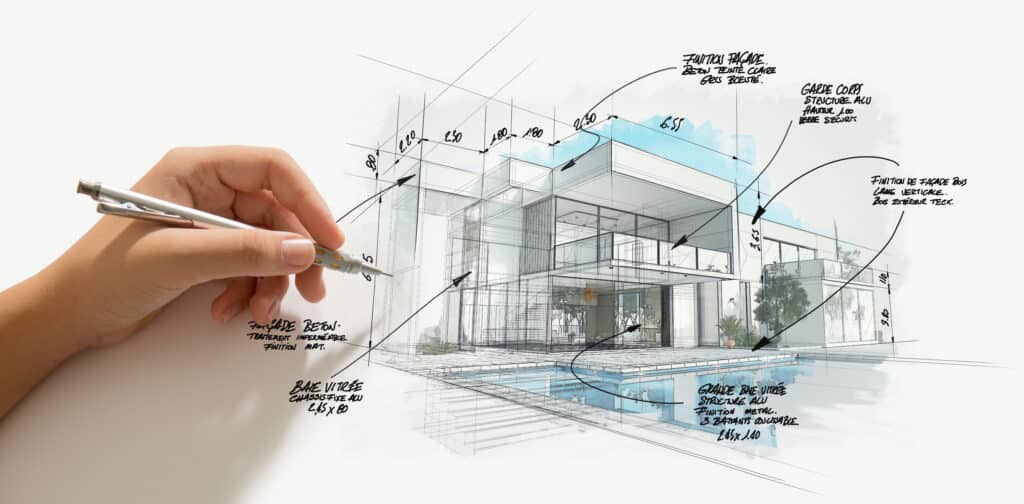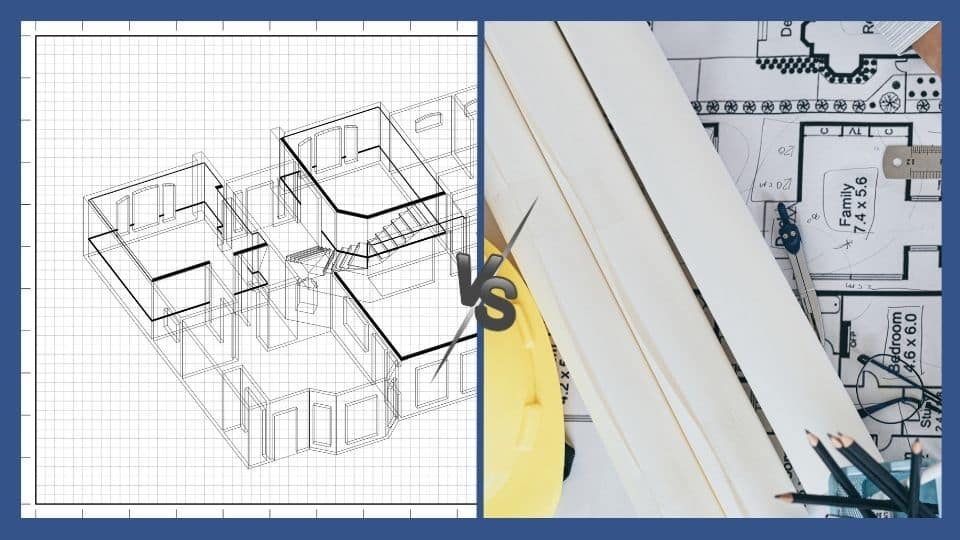Premier Winchester Architect for Unique Home Designs
Premier Winchester Architect for Unique Home Designs
Blog Article
The Art of Equilibrium: Just How Interior Design and Home Engineer Collaborate for Stunning Results
In the world of home layout, striking an equilibrium in between looks and functionality is no little feat. This delicate stability is attained with the harmonious partnership between interior developers and architects, each bringing their one-of-a-kind know-how to the table. The result? Spaces that are not just visually spectacular yet likewise exceptionally habitable. This perfect blend is not constantly simple to attain. Remain with us as we explore the details of this collaborative process and its transformative influence on home design.
Comprehending the Core Distinctions Between Interior Decoration and Home Style
While both Interior Design and home architecture play important roles in developing aesthetically pleasing and useful spaces, they are inherently various techniques. Home design mostly concentrates on the architectural facets of the home, such as developing codes, safety regulations, and the physical building of the area. It handles the 'bones' of the structure, dealing with spatial measurements, load-bearing wall surfaces, and roofing styles. On the other hand, Interior Design is much more worried with improving the aesthetic and sensory experience within that framework. It includes selecting and preparing furnishings, picking shade schemes, and including ornamental elements. While they operate in tandem, their duties, duties, and areas of experience deviate significantly in the development of an unified home setting.
The Harmony In Between Home Design and Interior Decoration
The synergy between home design and Interior Design depends on a common vision of design and the improvement of useful aesthetic appeals. When these 2 fields straighten sympathetically, they can transform a living room from regular to phenomenal. This cooperation calls for a deeper understanding of each self-control's principles and the capability to create a cohesive, visually pleasing atmosphere.
Unifying Design Vision
Merging the vision for home style and Interior Design can create a harmonious home that is both practical and aesthetically pleasing. The equilibrium starts with an incorporated way of thinking; designers and interior designers work together, each bringing their proficiency. This unison of ideas creates the style vision, a plan that overviews the job. This common vision is crucial for consistency throughout the home, guaranteeing a fluid transition from outside design to interior spaces. It promotes a collaborating technique where building components enhance Interior Design parts and vice versa. The outcome is a natural home that shows the house owner's taste, personality, and way of life. Therefore, unifying the style vision is crucial in mixing architecture and Interior Design for stunning results.
Enhancing Practical Appearances
Just how does the harmony in between home design and indoor design improve useful appearances? Architects lay the groundwork with their architectural layout, making certain that the area is effective and useful. An engineer may make a home with high ceilings and big windows.
Value of Collaboration in Creating Balanced Spaces
The collaboration between indoor developers and architects is essential in developing balanced areas. It brings consistency in between style and design, bring to life rooms that are not just aesthetically pleasing however likewise functional. Exploring effective joint approaches can offer insights into just how this harmony can be successfully achieved.
Harmonizing Style and Design
Balance, a crucial facet of both Interior Design and architecture, can only genuinely be attained when these two fields operate in harmony. This consistency is not simply a visual factor to consider; it impacts the capability, durability, and inevitably, the livability of a room. Interior developers and designers need to understand each various other's functions, value their proficiency, and connect properly. They should their explanation think about the interplay of structural elements with decoration, the flow of areas, and the effect of light and color. This collaborative process results in a natural, balanced layout where every component contributes and has a purpose to the general aesthetic. Balancing design and architecture is not simply concerning creating gorgeous spaces, yet about crafting rooms that work seamlessly for their occupants.
Effective Collective Methods

Instance Researches: Effective Integration of Style and Architecture
Examining numerous instance researches, it ends up being apparent just how the successful assimilation of indoor design and style can transform a space. Designer Philip Johnson and indoor designer Mies van der Rohe teamed up to develop a harmonious equilibrium in between the interior and the structure, resulting in a smooth flow from the exterior landscape to the internal living quarters. These case researches underline the extensive effect of an effective style and style collaboration.

Getting Over Obstacles in Style and Style Partnership
Regardless of the undeniable benefits of a successful partnership in between Interior Design and style, it is not without its challenges. Interaction issues can occur, as both celebrations might use various terms, understandings, and approaches in their work. This can lead to misunderstandings and hold-ups in job conclusion. Another significant challenge is the balancing act of looks and performance. Designers might prioritize structural stability and safety, while developers concentrate on convenience and design. The combination of these purposes can be complex. Furthermore, budget and timeline restrictions commonly include stress, possibly triggering rifts in the cooperation. Therefore, effective communication, good understanding, and concession are useful content important to get rid of these obstacles and achieve a effective and harmonious cooperation.

Future Fads: The Progressing Relationship In Between Home Architects and Inside Designers
As the world of home design proceeds to develop, so does the connection between architects and indoor developers. On the other hand, interior designers are accepting technical elements, influencing overall layout and performance. The future guarantees a more natural, innovative, and flexible technique to home style, as engineers and developers continue to obscure the lines, cultivating a connection that absolutely personifies the art of equilibrium.
Final thought
The art of balance in home layout is attained with the harmonious cooperation between indoor designers and architects. An understanding of each various other's self-controls, effective interaction, and shared vision are vital in creating aesthetically spectacular, useful, and inviting rooms. In spite of obstacles, this partnership fosters development why not try this out and technology in layout. As the relationship between home architects and interior developers advances, it will certainly continue to shape future trends, boosting convenience, effectiveness, and personal expression in our living spaces.
While both indoor style and home style play vital functions in creating cosmetically pleasing and useful rooms, they are naturally various techniques.The harmony in between home style and indoor style lies in a shared vision of style and the improvement of useful aesthetic appeals.Combining the vision for home design and interior style can produce a harmonious living space that is both useful and aesthetically pleasing. Therefore, unifying the style vision is vital in blending architecture and indoor design for magnificent results.
Just how does the harmony in between home architecture and interior style boost functional aesthetic appeals? (Winchester architect)
Report this page